As the seasons transition, many pet owners find themselves grappling with the challenge of managing their double-coated dog's shedding during coat blowing season.
This natural process of shedding can leave even the most prepared owners feeling overwhelmed by the sheer volume of fur that seems to fill every corner of their homes.
From specialized grooming techniques to dietary considerations, there are various strategies to help minimize the impact of this shedding phase.
Understanding these methods is crucial in maintaining your dog's coat health and overall well-being.
Key Takeaways
- Shedding is a natural process for double-coated breeds during seasonal changes.
- Manage shedding by understanding grooming needs and increasing grooming frequency.
- Avoid shaving double-coated dogs to maintain coat texture and insulation.
- Embrace shedding season as part of your pet's healthy coat maintenance routine.
Understanding Coat Blowing in Dogs
During coat blowing season, double-coated dog breeds undergo a natural shedding process characterized by the shedding of their undercoat and topcoat in response to hormonal changes and seasonal transitions. This shedding is crucial for these breeds as it helps them adapt to temperature changes, ensuring their comfort throughout the year. Shedding occurs primarily during the exogen phase, influenced by light and temperature variations.
Typically, the thick undercoat sheds twice a year, while the topcoat sheds once annually. Understanding this shedding process is essential for managing grooming needs effectively. It is important to note that shedding season is a normal occurrence for healthy double-coated breeds, such as Siberian Huskies, Samoyeds, Leonbergers, Pomeranians, Akitas, Chow Chows, and Golden Retrievers.
Shedding Process in Double-Coated Breeds
The shedding process in double-coated breeds is a vital aspect of their natural grooming cycle, ensuring proper maintenance of their insulation and temperature regulation. Double-coated breeds, such as Siberian Huskies, Samoyeds, and Chow Chows, have a dense undercoat for insulation and a protective topcoat for temperature regulation.
Shedding is controlled by hormonal changes and helps these dogs adapt to seasonal temperature variations. During shedding, the old fur is replaced to maintain coat health and comfort. Understanding the shedding process in double-coated breeds is essential for pet owners to provide appropriate grooming care during this natural cycle.
Proper grooming practices, including regular brushing and maintenance, can help manage shedding effectively and keep the dog's coat in optimal condition.
Shedding Frequency and Duration
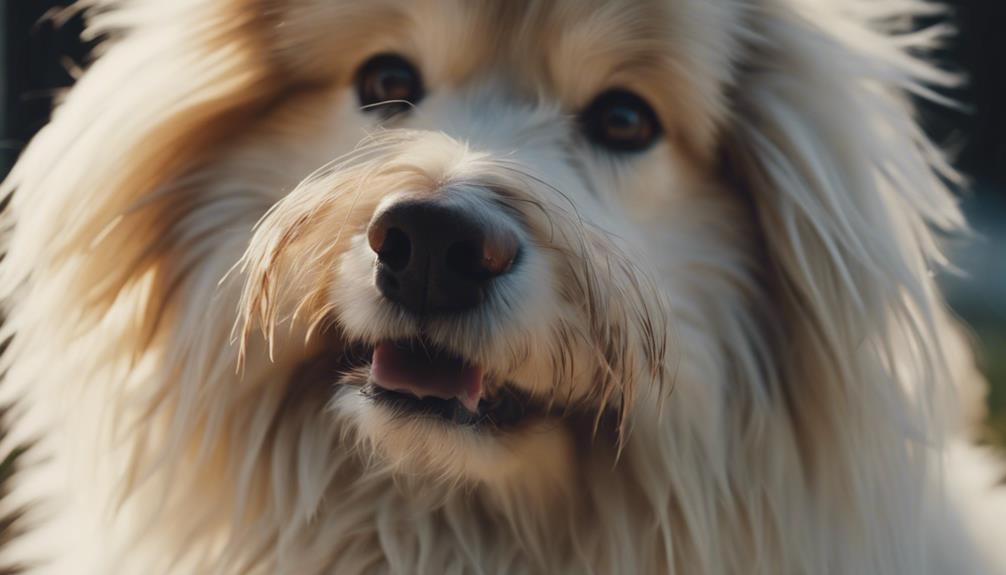
Shedding frequency and duration in double-coated breeds vary depending on the breed's specific characteristics and environmental factors. Typically, thick undercoats shed twice a year, while the topcoat sheds once annually. Shedding duration usually lasts around 2-4 weeks per season.
Factors such as hormonal changes, light exposure, and temperature fluctuations influence the shedding process. It is important to monitor shedding patterns, as excessive shedding or skin irritations may indicate underlying health issues. Understanding the shedding cycle of your dog's breed can help in managing grooming routines effectively during shedding season.
Regular veterinary check-ups and a balanced diet can also contribute to maintaining a healthy coat and minimizing excessive shedding.
Common Breeds That Blow Their Coat
Common double-coated breeds renowned for their annual coat blowing include Siberian Huskies, Samoyeds, Leonbergers, Pomeranians, Akita, Chow Chows, and Golden Retrievers. These breeds are known for their lush coats that require regular maintenance, especially during shedding season. Understanding the shedding patterns of these breeds can help owners prepare for managing the excess fur effectively. Below is a table highlighting these common breeds known for their coat blowing tendencies:
| Breed | Coat Blowing Frequency | Maintenance Tips |
|---|---|---|
| Siberian Husky | Annually | Regular brushing |
| Samoyeds | Annually | Frequent grooming |
| Leonbergers | Annually | Professional grooming |
| Pomeranians | Annually | Gentle brushing |
| Akita | Annually | Shedding tools usage |
Understanding these breeds' shedding characteristics can aid in implementing appropriate grooming practices to manage and minimize the impact of coat blowing.
Importance of Grooming Practices
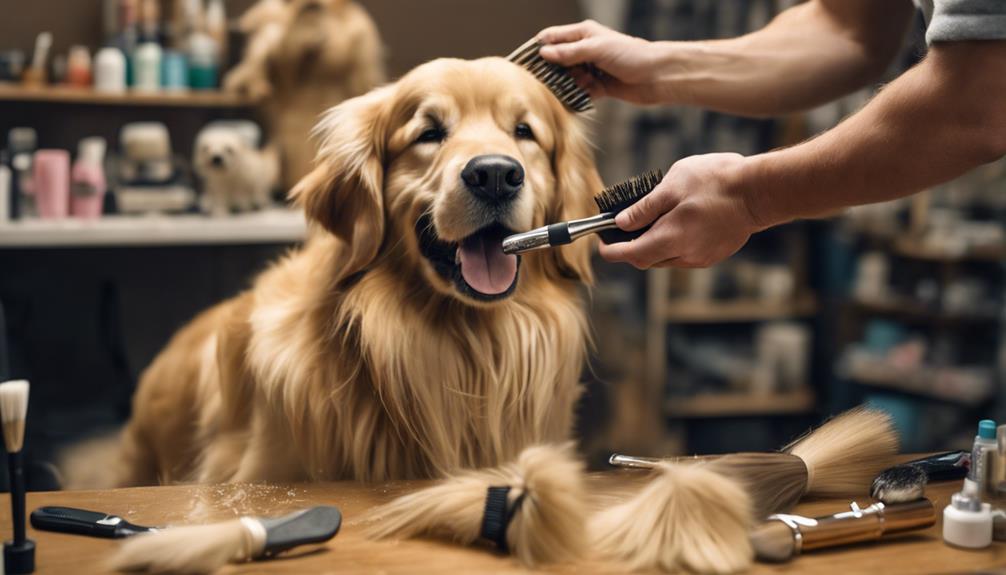
Maintaining a consistent grooming routine for double-coated breeds is essential for promoting coat health and managing shedding effectively. Regular grooming helps in distributing natural oils, preventing mats, and removing loose fur.
Brushing not only stimulates the skin but also aids in the removal of dead hair, reducing shedding around the house. Bathing with appropriate products can help maintain the coat's health and shine.
Additionally, keeping the ears clean, nails trimmed, and teeth brushed are crucial aspects of grooming practices for overall pet well-being. By adhering to a structured grooming regimen, pet owners can minimize shedding, prevent skin issues, and ensure their double-coated companions stay comfortable and healthy during coat blowing season.
Managing Shedding Around the House
Effectively managing the presence of excess dog fur in your living space requires strategic cleaning practices and regular grooming routines. As shedding season approaches, it's essential to stay on top of cleaning to maintain a fur-free environment. Utilizing lint brushes, pet hair removers, and other cleaning tools can help manage shedding around the house. Here's a visual representation to help you understand how to effectively manage shedding:
| Cleaning Tools | Cleaning Techniques |
|---|---|
| Lint Brushes | Use in a back-and-forth motion to remove fur from clothing and furniture. |
| Pet Hair Removers | Roll over surfaces to lift and trap pet hair effectively. |
| Vacuum Cleaners | Regularly vacuum floors, carpets, and furniture to remove embedded fur. |
| Microfiber Cloths | Use dampened cloths to pick up loose fur from surfaces. |
| Rubber Gloves | Dampen gloves and run your hands over surfaces to collect pet hair. |
Tools for Keeping Surfaces Clean
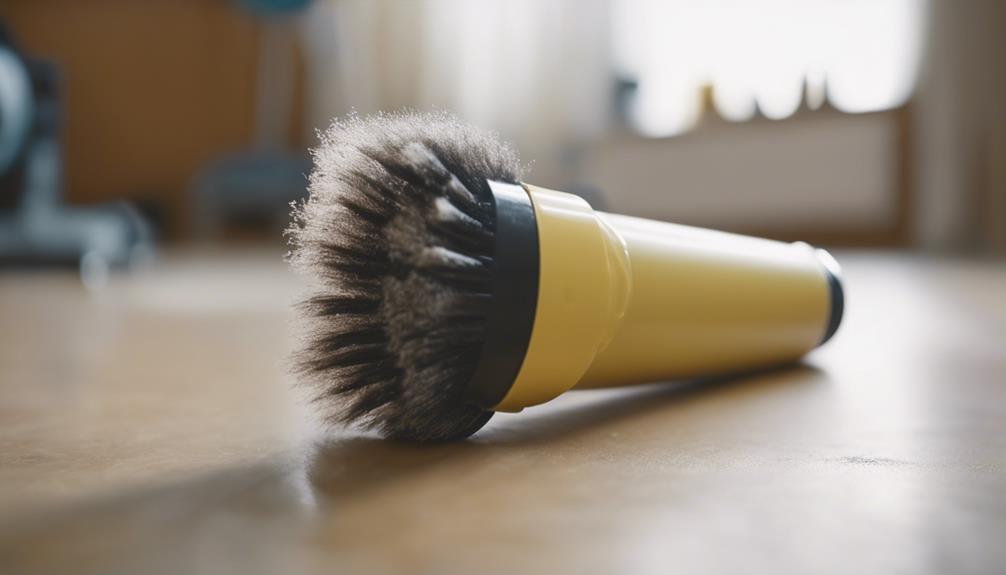
Utilizing appropriate tools is essential for maintaining cleanliness on surfaces prone to accumulating pet fur. To effectively manage the fur that flies during coat blowing season, consider the following tools:
- Lint brushes: Ideal for quickly removing pet hair from furniture, clothing, and other fabric surfaces.
- Pet hair removers: Help in easily collecting and disposing of fur from carpets, rugs, and upholstery.
- Microfiber cloths: Excellent for wiping down surfaces to pick up stray pet hair and dust.
- Rubber gloves: Use dampened rubber gloves to gather fur by running your hand over surfaces like couches and car seats.
Risks of Shaving Double-Coated Dogs
To ensure the health and well-being of double-coated dogs, it is crucial to understand the potential risks associated with shaving their coats. Shaving double-coated breeds can disrupt their natural insulation and temperature regulation mechanisms.
The undercoat and guard hairs work together to protect the skin from sunburn, heatstroke, and frostbite. Removing these layers through shaving can lead to long-term damage, including altered coat texture and color changes.
Additionally, shaved double-coated dogs may experience difficulty in regulating their body temperature, making them more susceptible to extreme weather conditions. It is recommended to avoid shaving double-coated breeds and instead opt for professional grooming techniques that preserve the coat's integrity and functionality.
Professional Grooming Advice
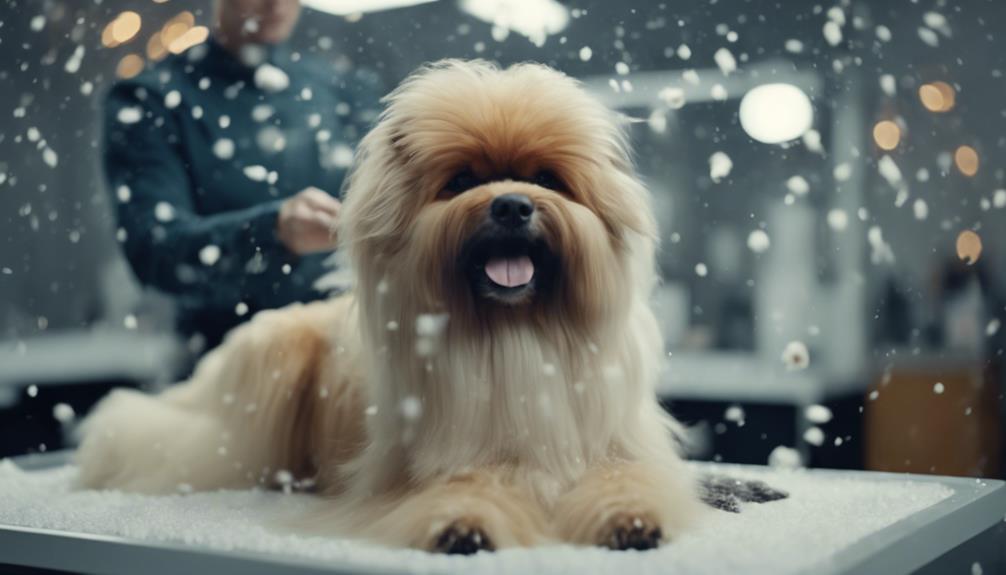
For expert guidance on grooming double-coated breeds during shedding season, consult a professional groomer specializing in handling thick undercoats and guard hair maintenance.
Professional groomers assess coat condition and recommend appropriate grooming techniques.
They use specialized tools like undercoat rakes and deshedding brushes to minimize shedding.
Groomers provide tailored solutions for individual breeds to maintain coat health.
They offer advice on diet and supplements that support coat quality.
Benefits of Regular Maintenance
Regular maintenance of your dog's coat through consistent grooming practices is essential for promoting overall coat health and minimizing shedding during coat blowing season. By regularly grooming your dog, you can prevent mats and tangles from forming, which can lead to excessive shedding.
Brushing helps distribute natural oils, keeping the coat healthy and shiny. Additionally, regular maintenance allows you to check for any skin issues or parasites that may be present, promoting early detection and treatment.
Through routine grooming sessions, you can bond with your pet while ensuring their coat remains in top condition. Overall, the benefits of regular maintenance extend beyond shedding control to encompass the health and well-being of your furry companion.
Embracing Shedding Season
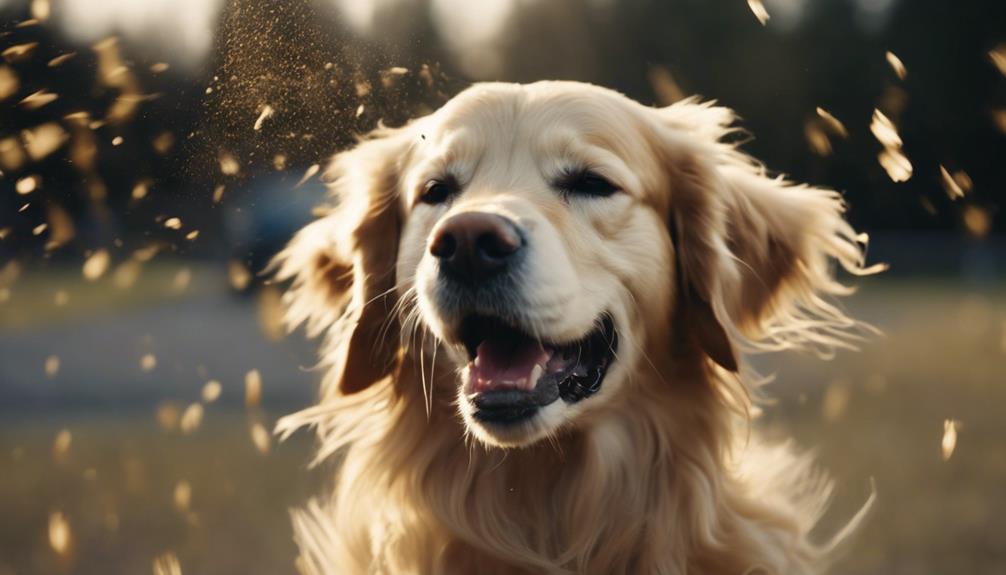
Embracing shedding season involves understanding and accommodating the natural shedding process of double-coated breeds for optimal coat health and comfort. When your furry friend starts shedding, here are some key points to consider:
- Regular Brushing: Increase grooming sessions to twice daily to manage shedding effectively.
- House Cleaning: Expect additional cleaning tasks to keep your living space fur-free.
- Lint Rollers: Use lint brushes and pet hair removers to maintain clean surfaces.
- Avoid Shaving: Refrain from shaving double-coated dogs to preserve their coat's texture and insulation.
Techniques to Minimize Fur Loss
To effectively manage shedding in double-coated breeds, implementing strategic grooming techniques can help minimize fur loss. Regular brushing with an undercoat rake or slicker brush can remove loose fur and prevent matting.
Bathing with a high-quality deshedding shampoo can help loosen dead hair and promote a healthy coat. Using a grooming tool like a de-shedding blade or rubber curry comb can further reduce shedding by removing loose fur from both the undercoat and topcoat.
Additionally, incorporating supplements rich in omega-3 fatty acids can support coat health and reduce shedding. By following a consistent grooming routine and utilizing appropriate tools and products, pet owners can effectively minimize fur loss during shedding season.
Diet and Hydration for Coat Health
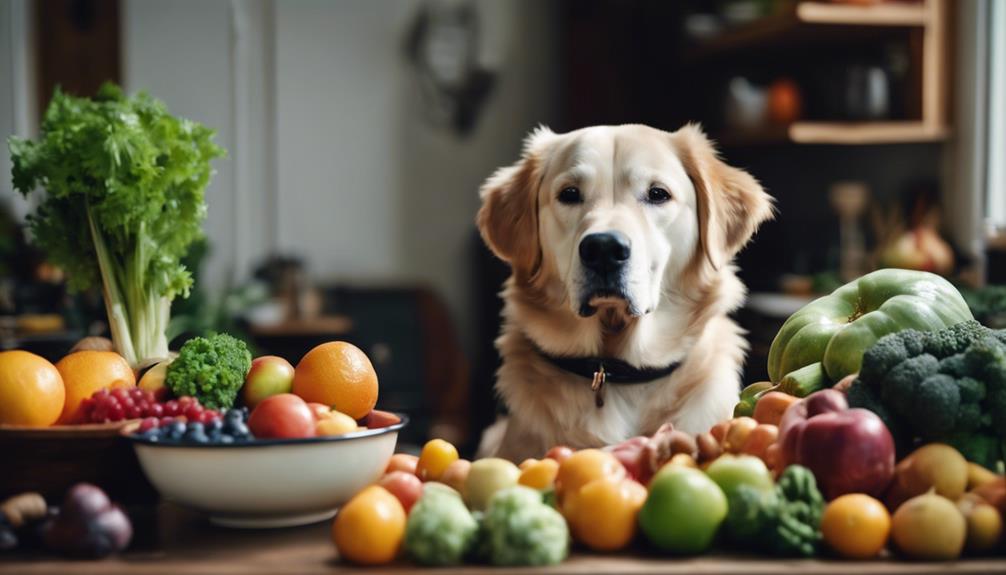
Implementing a balanced diet and ensuring adequate hydration are crucial factors in maintaining optimal coat health for double-coated dog breeds, complementing grooming practices to minimize shedding.
To support a healthy coat, consider the following tips:
- Provide a high-quality diet rich in essential fatty acids and proteins for coat nourishment.
- Ensure access to clean and fresh water at all times to prevent dehydration, which can affect coat quality.
- Incorporate omega-3 fatty acids supplements to promote coat health and reduce shedding.
- Monitor food sensitivities or allergies that may manifest as skin issues affecting the coat.
Vet Check-Ups for Coat Condition
Regular veterinary check-ups play a pivotal role in assessing and maintaining the condition of a double-coated dog's fur. These check-ups help identify any underlying health issues that may affect the coat, such as skin infections, allergies, or hormonal imbalances. Additionally, veterinarians can provide guidance on proper grooming techniques and recommend supplements to support coat health. Here is a table summarizing the key benefits of vet check-ups for coat condition:
| Benefits of Vet Check-Ups for Coat Condition |
|---|
| Early detection of skin issues |
| Professional grooming advice |
| Recommendations for coat supplements |
Conclusion
In conclusion, managing coat blowing season in double-coated dogs requires understanding shedding frequency, implementing effective grooming practices, and prioritizing coat health through proper diet and hydration.
By embracing shedding season and utilizing techniques to minimize fur loss, pet owners can ensure their furry companions remain comfortable and healthy during this natural process.
Regular vet check-ups also play a crucial role in monitoring coat condition and addressing any underlying issues.




